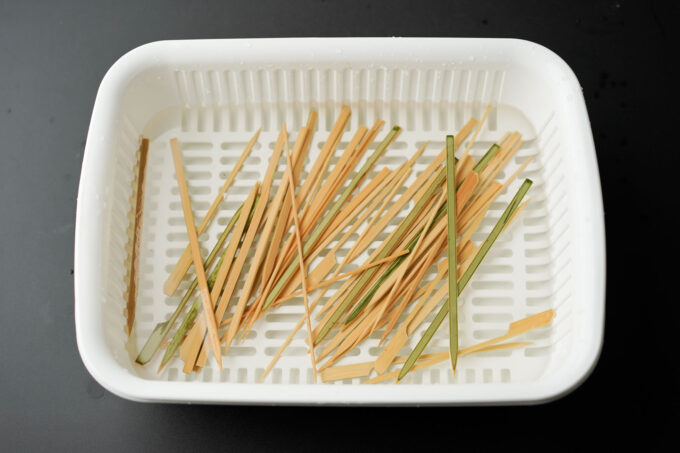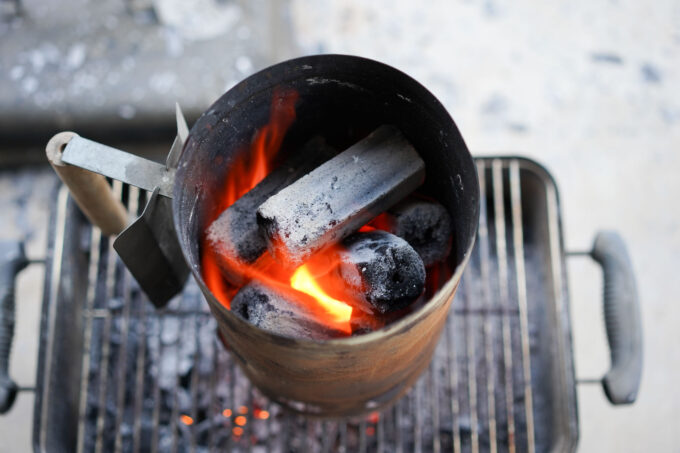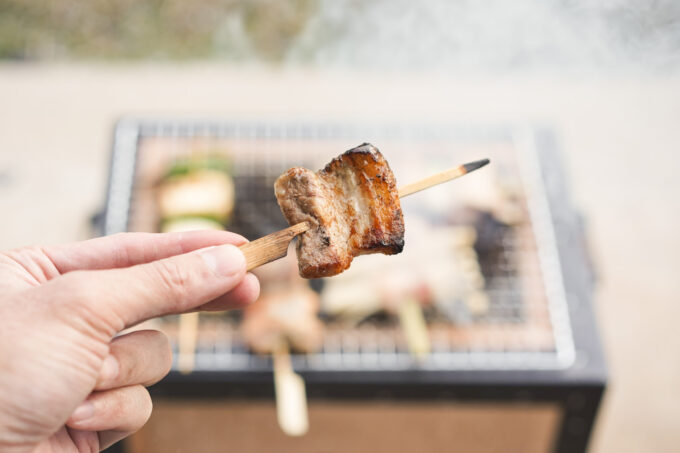I LOVE making yakitori at home and making it with actual charcoals or binchotan for that amazing bbq smokiness you just can’t replace with any other cooking method.
The variety you get with yakitori just makes it extra fun to eat! My favorites are chicken with green onion, but I also have to have pork belly, grilled quail egg, some form of bacon-wrapped veggies, and of course mushrooms.
That’s a lotta must-haves but these are great as leftovers too. Let’s get to grilling!
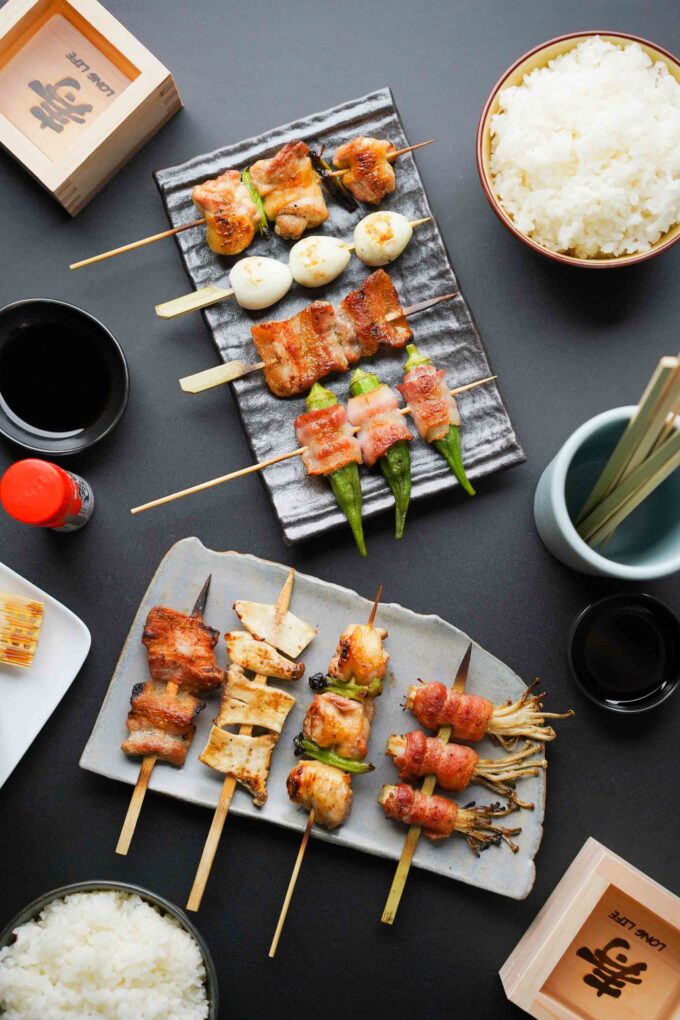
Yakitori, or “grilled chicken” in Japanese, is a traditional form of grilling in Japan. While there are various cuts of chicken meat that are pierced onto bamboo or metal skewers, it can also refer to grilled vegetables or other meats like pork belly.
My favorite places to eat yakitori are local restaurants, Honda Ya and Shinsengumi. However, it’s also fun to grill yakitori at home.
Yakitori grill types & setup
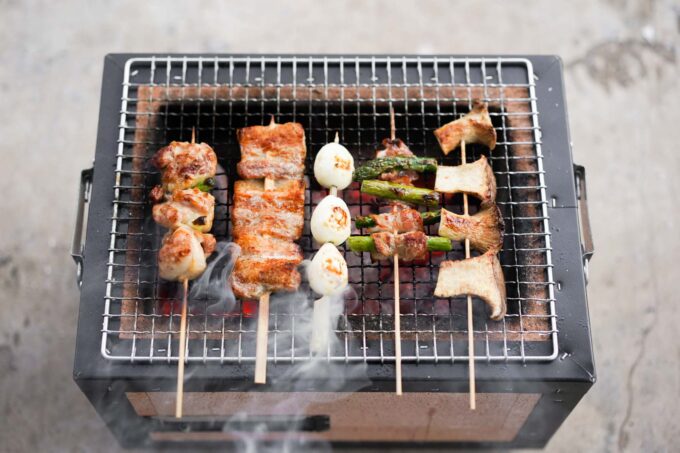
Yakitori grills are a semi-specialized type of grill meant for handling skewers. So, compared to your regular American bbq style charcoal grill, the ones I’ve found are typically rectangular in shape.
Yakitori grills are designed to accommodate a row of skewers which are typically 6-8″ each, with different width grills so you can grill even more skewers at a time side by side.
Charcoal yakitori grills have these features:
- Flat bottoms and flat sides on the interior to accommodate binchō-tan, the common coals used for yakitori.
- About 5-6″ of depth for the coal area: enough room to stack at least 2 layers of coals, and keep the distance between coals and skewers about 1-2″.
- Sliding doors on the front and back to control airflow to regulate charcoal temperature.
- Construction material of the yakitori grill I have is diatomite brick, to better insulate the higher-than-normal heat of binchō-tan, although stainless steel yakitori grills are also common.
- A grill grate to keep the food a uniform distance from the heat
- Some grills have notches for skewers to sit in, so they stay in place and are easier to rotate—this lets you easily target the sides of chunky pieces of chicken or things that don’t sit flat like quail eggs.
Stainless steel charcoal yakitori grills like the Yak Grill share all of the above characteristics but also may have:
- No other layer of insulation than the single stainless-steel wall
- An interior box you can pull out and wash out charcoal, ash, and oil from cooking
- A grid to raise the charcoal off the bottom, allowing for more airflow underneath
Electric yakitori grills typically share the same shape as the above grills and have:
- Much lower maximum temperatures
- Lack of charcoal flavor, but also produce less smoke so they have the ability to safely grill indoors with some ventilation
- Flexibility in heating element placement (some models even have you place the skewers vertically), although no models seem to outperform the traditional flat orientation
Coals & binchotan for yakitori
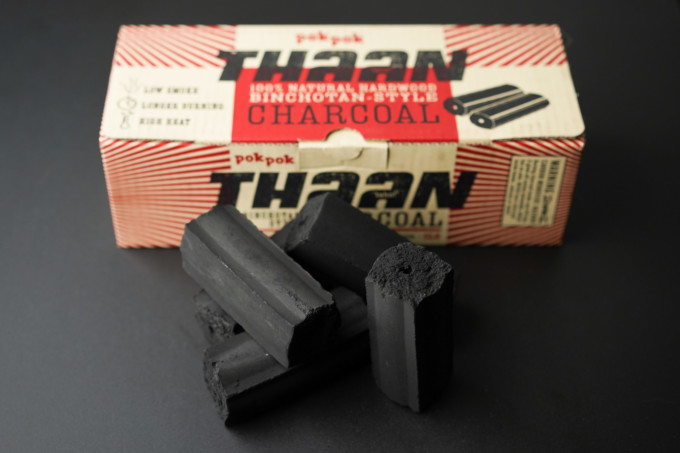
The type of coals used for yakitori are called binchō-tan, or white charcoal. These types of coals are made of a hardwood like oak, which gives it a long burn time (about 4-5 hours) with a high heat level (up to 1600°F). You can find more information and a variety of different types of binchō-tan at Korin.
Most of these coals do come with a hefty price tag, but due to their long burn time they could be worth it. I used a new version of coals from PokPok (yes, the restaurant) called Thaan, which is slightly less in price.
Homemade yakitori tare (sauce)
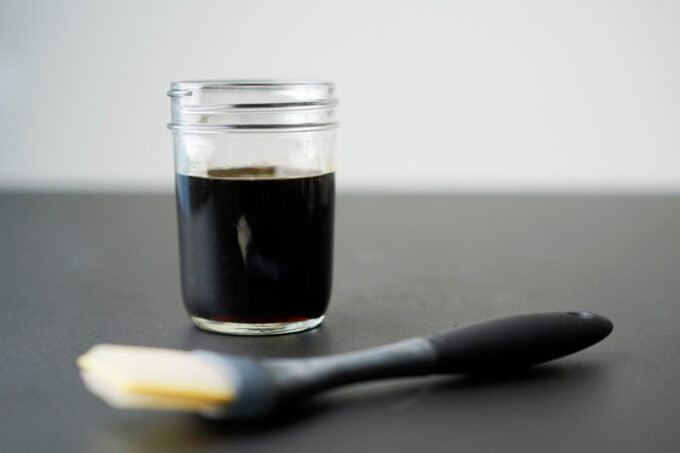
Most yakitori is seasoned with salt, but it’s also important to brush on some yummy basting sauce called “tare.” This special sauce is often a mix of soy sauce, sake, mirin, and sugar, but each restaurant, or yakitori-ya (a restaurant specializing in yakitori), has its own special ratio. Often times, this tare is reused and passed down from chef to chef, building complex flavors throughout the years.
Bamboo skewers for grilling
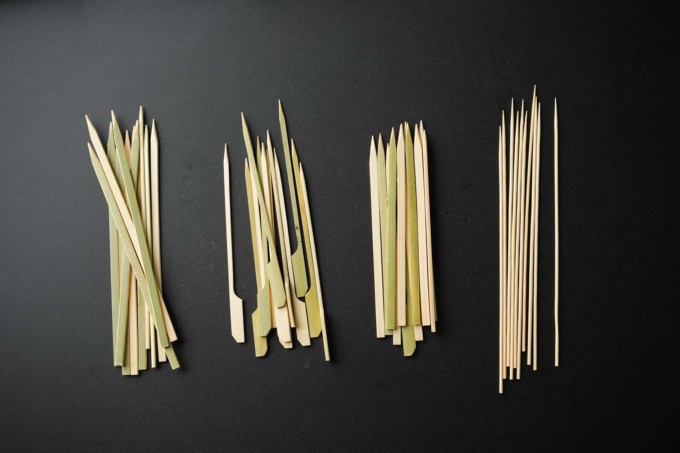
For skewers, I had an assortment that I purchased from Korin. My favorite to use was larger ones (more than 6 inches) because it’s easier to handle over the grill without burning myself. For most of the meat pieces, I liked using thinner skewers to pierce the meat easier. For other pieces like okra or bacon covered enoki mushrooms, I liked using the thicker bamboo skewers to hold the pieces in while they were grilling.
Before skewering any meat or vegetables, I would highly recommend soaking them in water for at least 1 hour to help prevent them from burning too fast over the grill.
Types of meat to use for yakitori
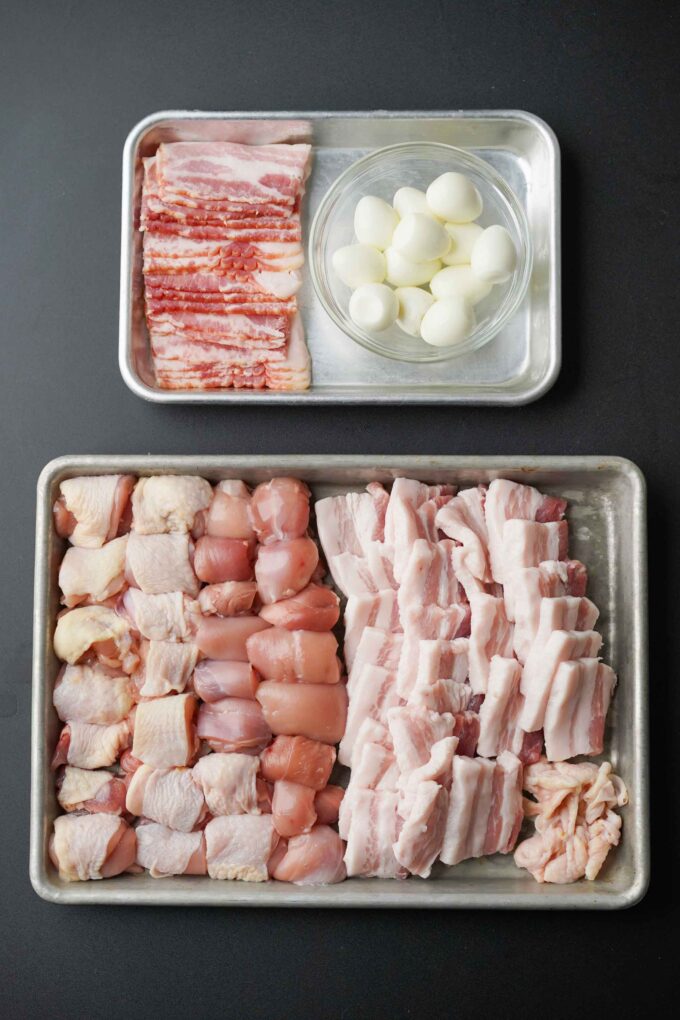
Some of my favorites include:
- Yakitori-momo: chicken thigh
- Yakitori-negima: chicken thigh and spring onions
- Yakitori-kawa: chicken skin
- Yakitori-buta bura: pork belly
- Quail eggs
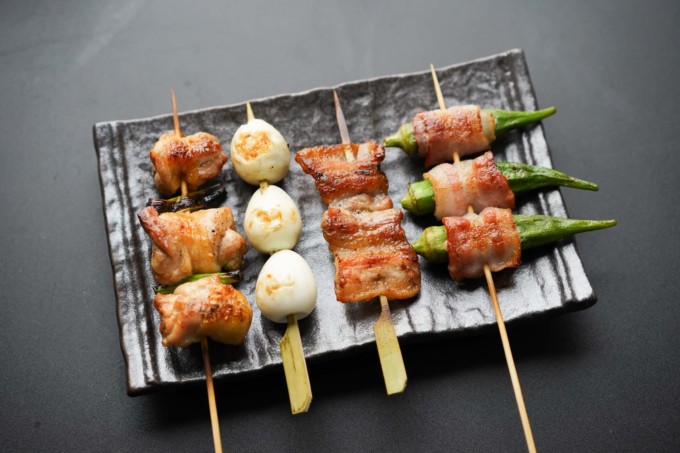
Types of veggies to use for yakitori
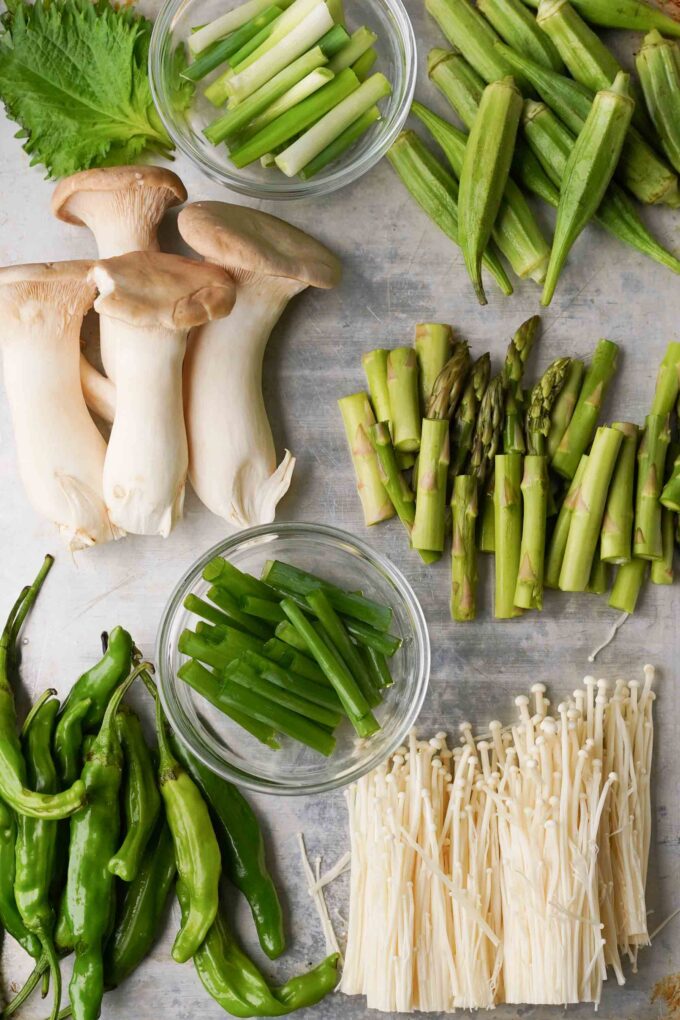
Some of my favorites include:
- shishito peppers
- asparagus (bacon wrapped is great)
- okra (bacon wrapped is great)
- enoki (ok you can wrap anything in bacon)
- green onions
- any thick mushrooms
- shiso leaf
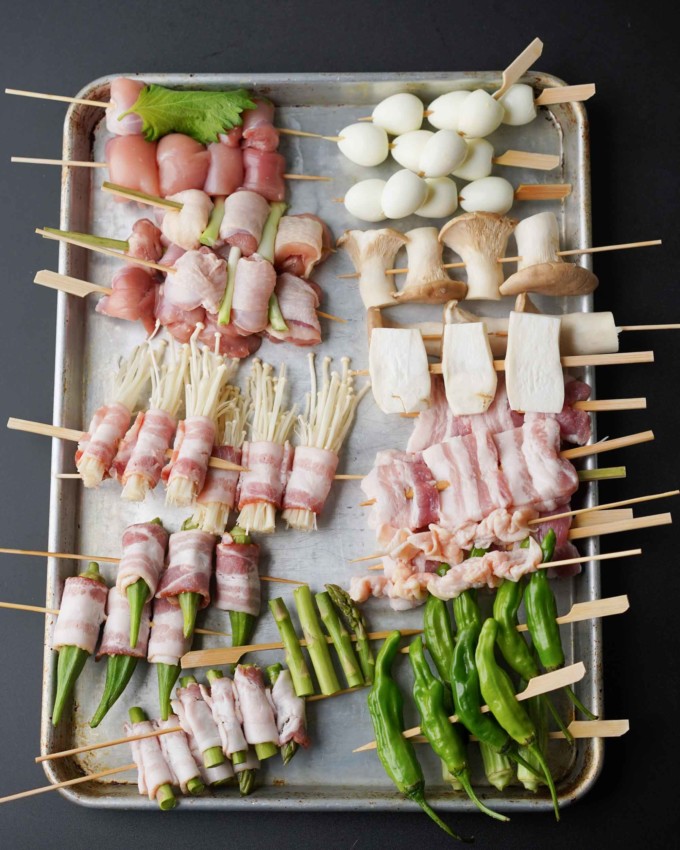
Making yakitori without a grill
My favorite way to eat and cook yakitori is using a charcoal grill because there’s just no replicating the smoky flavor from the grill. However, if you don’t have access to a grill, you also have the option to broil yakitori in the oven.
I would, however, watch the oven closely since the skewers or meat can burn fast if the oven is too hot. Remember to pull the meat and baste with the tare towards the end of cooking.
Hibachi vs teppanyaki
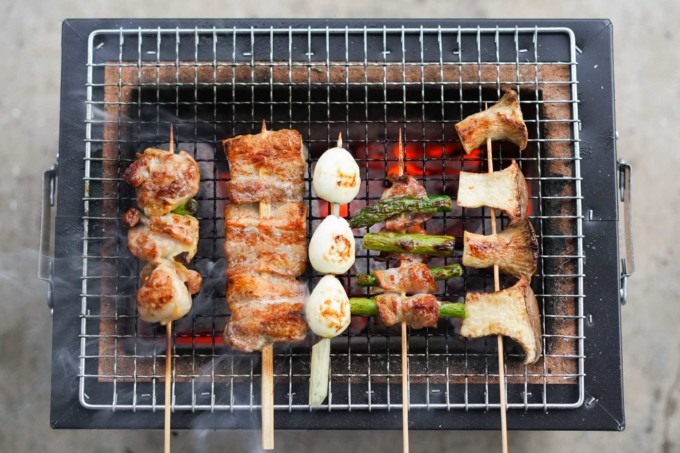
Yakitori is typically cooked on a hibachi grill. Unfortunately for many Americans, there seems to be a common misunderstanding between hibachi and teppanyaki. Teppanyaki grills have been around since 1945, but hibachi grills have been around for hundreds of years.
The main difference between hibachi and teppanyaki grills is that hibachi grills have a traditional fire or charcoal stove with a grate on top, whereas the teppanyaki grill is a wide and flat top that is more like a griddle (like those at Benihana).
Cooking tips
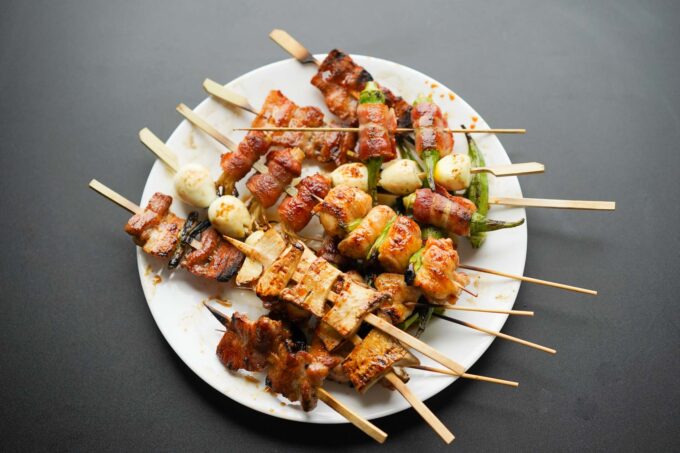
- Learn how to properly start a charcoal grill here.
- Don’t make chicken or any food on your skewer too thick—it will be hard to season all the way through.
- Don’t let skewers sit over flare-ups. If your food drips fat, it can cause flames to grow. This doesn’t taste good and isn’t good for you to eat. Move the skewers away from the flame, and you can even spray them with water to put out the fire.
- Don’t leave the grill unattended. Things can cook very fast.
- Since the heat is high, flip your skewers very often to promote even heating and so you can see the cooking progress.
For other grilled bbq options, I would recommend making Filipino BBQ pork skewers, veggie kabobs, or grilled fish.
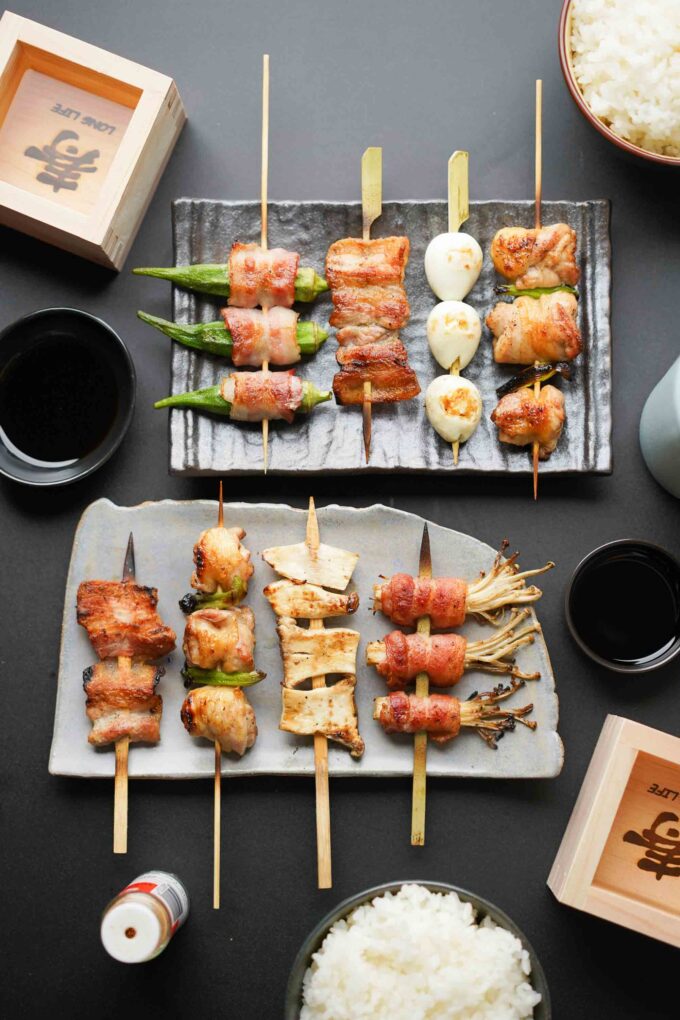
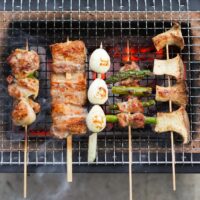
Yakitori Skewers (Charcoal Grilled Chicken, Bacon & Veggies)
Ingredients
Yakitori
- 1 lb chicken thigh (or leg) skin on, deboned
- 1 lb pork belly cut in ¼ inch thick slices
- 6 strips bacon
- shiso leaves
- 1 bunch green onions cut into 2-inch pieces
- 12 shishito peppers
- 12 quail eggs
- 4 trumpet mushrooms cut into even slices
- 1 pack enoki mushrooms
- 4 stalks asparagus cut into 2-inch pieces
- 12 okra
Tare
- 3 fl oz (6 tbsp) soy sauce
- 3 fl oz (6 tbsp) mirin
- 3 fl oz (6 tbsp) sake
- 3 fl oz (6 tbsp) water
- 17.2 g (4 tsp) brown sugar
Toppings
- salt
- yuzu or lemon
Equipment Used
- charcoal grill & charcoals
- tongs
- 40 bamboo skewers at least 6 inches
- sheet pan(s) or plates
Instructions
Yakitori
- Soak the wooden skewers in water for at least 1 hour (or more).
- Chicken thigh/leg: If using bone-in chicken thigh or leg, remove the bones. You can either choose to keep the skin on or remove it and skewer the skin separately (see directions below). Lay the meat flat on the cutting board and cut the meat in 2×2 square shapes. Try to keep the chicken in even shapes to make sure they all cook at the same rate. Chicken with green onions: Slice the green onions in 1 ½ inch pieces. Fold each chicken square in half and place one on the skewer. Add one green onion piece so that it lies parallel to the chicken horizontally. Repeat once more, and end with a chicken piece. Chicken with shiso leaves: Skewer 3 to 4 pieces of chicken and then wrap one shiso leaf around the skewered meat stick. It should stick to the meat and not move around.
- Chicken skin: Try to cut the chicken skin in long strips. Carefully add the chicken skin on one skewer while folding the skin like an accordion onto the skewer. This can be a little slippery so be careful and try to dry the skin with a paper towel before piercing and also dry your hands throughout the process so you can get a good grip on the skin.
- Pork belly: Cut into ¼ inch thick slices. Depending on the skewers, use one thick skewer or two thin skewers to stack about 2 slices of pork belly horizontally flat.
- Quail eggs: In a pot of boiling water over medium-high heat, carefully lower the quail eggs into the water and boil for 3 minutes (this is for eggs about 10-11.5 g in weight, if your eggs are heavier, add 30 seconds to the boiling time). Immediately transfer to an ice water bath for two minutes. Peel the shells. Add the eggs vertically on the skewers so that the pointed top is face the sharp point of the skewer.
- Trumpet mushroom: Clean the mushrooms under running water to remove dirt. Cut the mushrooms into 1-inch sections and skewer the mushroom onto one skewer per mushroom, leaving about ¼ inch space in between each section.
- Enoki mushroom bacon: Cut the bottoms of the enoki mushrooms and clean them under running water—making sure not to break apart the mushrooms too much. Take the bacon and cut it in about 3-inch pieces. Separate the enoki mushroom into ½ inch thick sections and take one bacon piece and wrap it around the enoki mushroom. Use the skewer to pierce the overlap of the bacon—this will secure the bacon onto the enoki. Repeat until you have three pieces of the bacon wrapped enoki on the skewer.
- Asparagus bacon: Clean the asparagus under running water, cut the ends off to remove the tough bottoms (about ½ or 1 inch from the bottom). Cut the asparagus into 2-inch pieces. Cut about 2 pieces bacon into 2-inch strips. Wrap one piece of bacon around one piece of asparagus and use the skewer to pierce the overlap of the bacon to secure. Repeat until you have 4 pieces of bacon wrapped asparagus on the skewer.
- Shishito peppers: Clean the shishito peppers and use two skewers to secure about 3 shishito peppers of the same size onto the skewers horizontally.
- Okra: Clean the okra and use two skewers to secure about 3 okra of the same size onto the skewers horizontally.
Tare
- Combine all the ingredients in a small sauce pot over medium-high heat. Use a whisk to make sure everything is incorporated. Bring the sauce to a boil and lower to medium heat. Continue to cook for about 10-15 minutes or until the sauce thickens and coats the back of a spoon (or reduces in half).
- Transfer the sauce into a jar to cool for at least 15 minutes, or until it’s cool to the touch.
Grilling
- Heat your coals. I use a chimney starter, and let it heat up for 10-15 minutes. I like to flip the binchō-tan inside it midway so it heats more evenly. You know it’s done when all the coals are almost entirely covered in white ash. Arrange these coals into your yakitori grill, place the grate on and start grilling.
- Start grilling. I like to start with the somewhat fattier pork belly or bacon wrapped pieces so the grill gets some oil on it. But generally you can just put on the skewers and flip them every 20 seconds or so, making sure both sides evenly coast to proper doneness with a good sear.
- Manage the heat. There are often hot spots on the grill, hotter than others. This means you should be moving the skewers around so each one can cook evenly, and so one spot doesn’t just burn anything you put on it. If something is charring before it’s fully cooked (test with an instant read thermometer to know), move it to a cooler spot.
- Season each skewer with salt a bit on both sides when you first put it on the grill, and re-season with salt midway too. If you will be basting with tare / yakitori sauce at the end you can scale back a bit. When the first batch of skewers is done make sure you taste one to test its seasoning level, and adjust if needed for the next batches. Add baste or dip any skewers you wanted to in the tare.
- Cool off the coals. Move the coals to a galvanized or metal container / bucket and pour a few cups of water on them to cool them off. Even after grilling for four hours, my coals are usually still pretty large. If you put out the heat, you can reheat and use them during future grill sessions!

